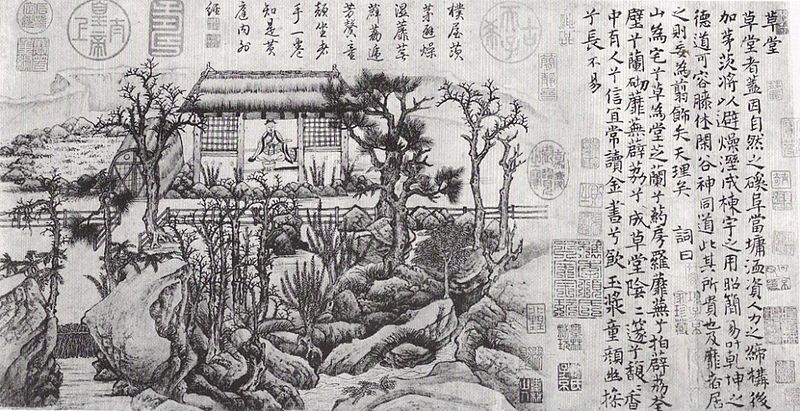Lu Hong, View 1 of Ten Views from a Thatched Hut (copy of 8th century original)
Source: Wikimedia Commons
When we look at Chinese landscape paintings, we are seduced not just by their rivers and mountains, but by the idealised life of landscape contemplation they often portray. The image above is one example, attributed to the Tang dynasty painter Lu Hong. According to Wu Hung (in Yang Xin et al's Three Thousand Years of Chinese Painting) this work, Ten Views from a Thatched Hut, may be 'the first work in Chinese art history that we could call a scholarly painting, in a style that would dominate Chinese painting after the Song, for its main features are all related to the self-identity of the scholar-artist.' Wu identifies four characteristics that it shares with later work of this kind:
- The landscape is neither imaginary or a famous beauty spot, it is the country estate of the painter himself.
- The artist himself appears in most of the scenes, 'listening to the sound of a stream, standing on top of a small hill, conversing with a fellow hermit inside a cave, or cultivating longevity techniques inside his thatched hut.'
- This is not an illustration of someone else's writings - Lu Hong was the author of text and painting, the words identifying the site portrayed and describing the artist's response to it.
- As a monochrome painting, the text could be appreciated in its own right as calligraphy.

No comments:
Post a Comment